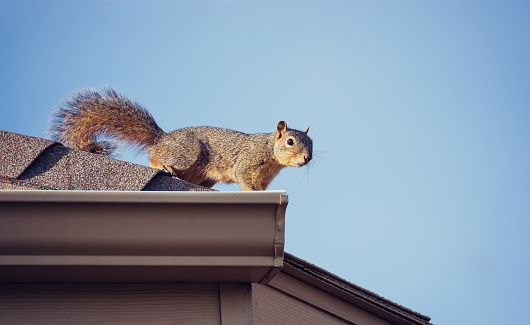Will Squirrels vacate an attic?
Contents
Squirrels living in attics are a concern due to the fact that they may gnaw on boards and electrical wires. Typically, the most serious problems come from nesting adult females. Squirrel removal Ann Arbor have the ability to remove the animals from attics. They frequently build their nests near openings, such as an unscreened vent or loose or rotten trim boards.
The very first sign of a squirrel in the attic is usually the sound of scuttling during the day, as they come and go on foraging journeys. Juvenile squirrels, and sometimes grownups, might fall into wall cavities and be unable to climb out, making relentless scratching sounds as they attempt to get away, and ultimately passing away if they can’t.
Find Out What You’re Dealing With
If you’ve heard skittering, scratching, or rolling noises from your ceiling, there’s a good chance you’re harboring some kind of wildlife in your attic, but it may not necessarily be a squirrel. Generally, squirrels are active throughout the day, so sounds in the night hours are most likely to come from nocturnal animals like rats and mice. If the weird sounds have actually taken place between the months of March and October, it might even be that a mom came to nurse her newborn squirrels in the attic and out of the elements.
If you’re still unsure, check the tracks. You can catch paw prints with the help of a pantry product or two. Spread flour over a piece of cardboard, and place it inside the attic’s entryway or near the suspected access to point. Leave it there for a day or 2, and then examine the surface area for the prints. Many squirrel tracks appear like little feet and are around 1 to 1 1/2 inches long. Alternatively, footprints double that size might come from a raccoon, while mice prints are far smaller and rat tracks include fine points developed by their claws. A foul smell or droppings cluttering the flooring could signify a longstanding problem, so it’s essential to move quickly when you’ve identified the kind of animal you’re dealing with.
Crucial Safety Measures
Listen carefully after excluding to be sure no squirrel is caught inside or has actually gotten back in. See carefully to see if the squirrel keeps attempting to get back in. If it’s really cold out, it’s best to wait until spring prior to eliminating the squirrels.
Exposed Wiring

Squirrels who have actually been in attics for a while may have chewed on exposed circuitry, which might cause a fire. Once they are gone, ask an electrical contractor to carefully check all exposed wiring.
Beyond the Attic
In tight places, such as crawl spaces between floorings, try snaking a vacuum cleaner tube into the restricted space. Reverse the setting to blow air and leave the vacuum on up until the nester leaves to look for more pleasant areas.
When to Call an Expert
If you need to force out a mother and her babies or if you’re not able to get the squirrels out on your own, we strongly advise working with professional support. Evicting squirrels can be tough. There are potential safety risks to the property owner and humane concerns for the squirrels if the eviction isn’t done properly.
Moving Is Not the Answer
Live-trapping squirrels and taking them to “the woods,” where they will live happily ever after, is not the ideal solution to local issues. Research studies show that a couple of squirrels may make it through the relocation. And when a squirrel is eliminated from a backyard, another squirrel will move in, often within a couple of days.
Public Health Issues
Squirrels can harbor pathogens, such as salmonella, that might be hazardous to individuals, however, transmission has hardly, if ever, been recorded. And although rabies can happen in squirrels, as with any mammal, there is no recorded case of anyone getting rabies from a squirrel.
Read More On
What Are Squirrels Doing In My Attic?
